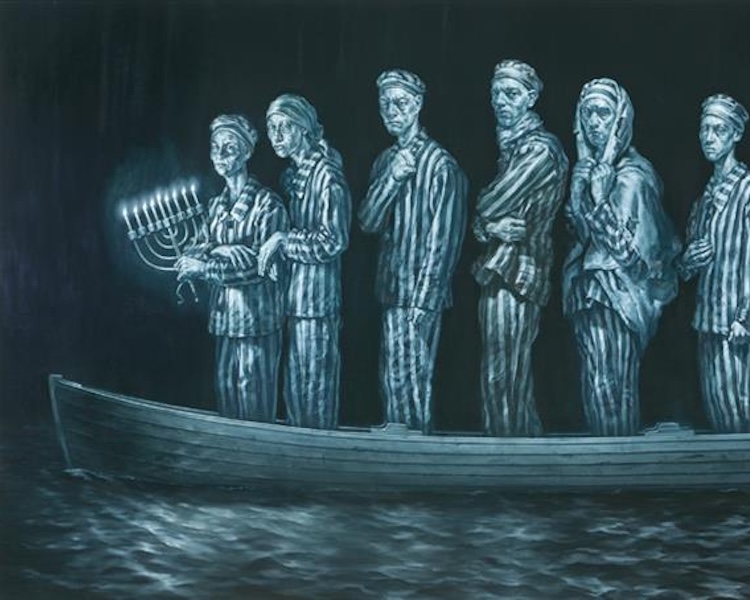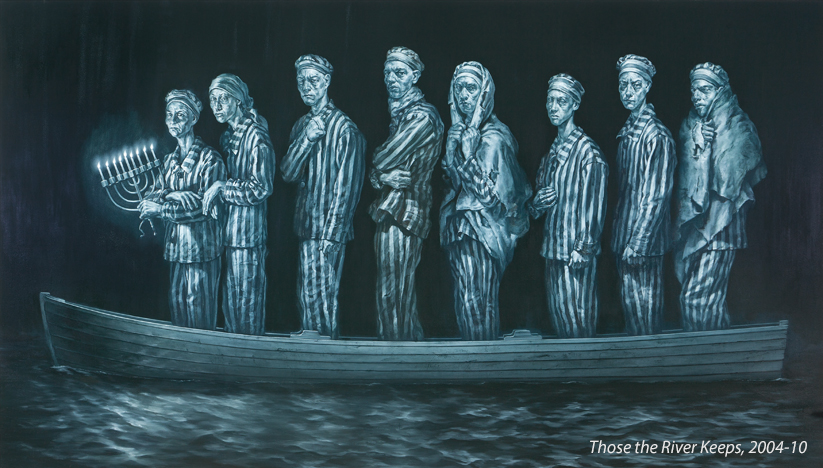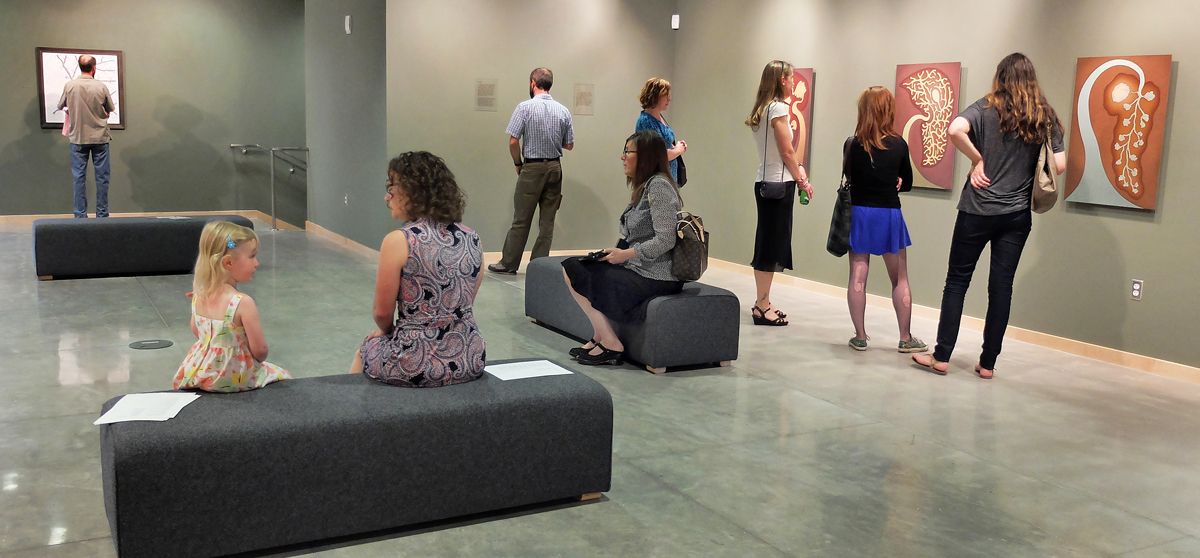ISWASWILLBE HOLOCAUST SERIES | GEOFFREY LAURENCE
Date: April 3, 2016 - August 12, 2016

"Those the river keeps," painting by Geoffrey Laurence
Art can illuminate traumatic experience in ways that are non-narrative and not necessarily bound to historical veracity as well as in ways that are polyvalent, metaphorical, ambiguous and elusive. With regard to the inconceivable enormity of the Holocaust and its effects on the children of survivors – the generation of “post-memory” – what role can art play in both the preservation of memory and the mediation of the trauma which they have inherited?
To see the paintings in Geoffrey Laurence’s Holocaust Series, is to respond with a gut-wrenching recognition of their “genuineness” – their capacity as art to tell the truth with consummate aesthetic and emotional restraint. Laurence's astonishing technical bravura does not overwhelm or “aestheticize” the profound impact of the work. They are in equal measure both dazzling and devastating.
During the 1960s, the slogan, “Never Again!” emerged in the Jewish community as a rallying cry of defiance and grief. Unfortunately, there have been too many “Agains” in the 20th and 21st centuries – Stalin’s forced starvation of over 10,000,000 Ukrainians, the 50,000,000-70,000,000 Chinese murdered by Mao Zedong, the Cambodian genocide, the Rwandan genocide, and the Sudanese genocide and the current catastrophe unfolding in Syria. Where are the artists and other culture workers who will bear witness to those ruptures in history? Who will be their Geoffrey Laurence?
- Simon Zalkind, Curator
- Co-sponsored by the Mizel Museum in Denver
- Featuring select artwork courtesy of the Tia Collection and the Museum of Biblical Art, Dallas
- Holocaust Series book available on the artist's website
- View the conversation with artist Geoffrey Laurence and curator Simon Zalkind, recorded on April 3
- CU Medicine Today article, "Teaching Medical Ethics and the Holocaust," May 2016
The Holocaust Genocide and Contemporary Bioethics Program promotes education, scholarship and community engagement on the lessons of the Holocaust for health care and society.
 Hours
Hours